Adam J. Smith
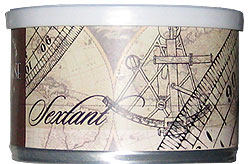 Tin Notes: A classic mixture harmoniously married to a Navy flake. Ripe Virginia tobaccos are first blended with Cypriot Latakia, fine Orientals, and a touch of dark-fired Kentucky leaf, then infused with a hint of dark rum before being gently pressed, matured, and sliced. The flavour is rich, bold and satisfying; the aroma an enchanting interweaving of traditions.
Tin Notes: A classic mixture harmoniously married to a Navy flake. Ripe Virginia tobaccos are first blended with Cypriot Latakia, fine Orientals, and a touch of dark-fired Kentucky leaf, then infused with a hint of dark rum before being gently pressed, matured, and sliced. The flavour is rich, bold and satisfying; the aroma an enchanting interweaving of traditions.
Gregory Pease has to say (excerpt from website): The fifth entry in the Old London Series, Sextant, defies categorization somewhat. While it has many similarities to a conventional, traditional mixture, the infusion of dark rum, and the addition of fire-cured Kentucky, especially when combined with the pressing and fermentation that occurs as a result, give it a unique sweetness and aroma. The rum offers a subtle but engaging contribution throughout the smoke, which is rich, deep and complex. It is not an aromatic, for those who are wondering, nor can it be considered the typical sort of "crossover" mixture. It truly is the seamless integration of a traditional mixture with what many think of as a Navy Flake.
The flakes are not firmly packed, but are kept looser than a conventional flake, and therefore easily broken. If pressed tightly for too long, the overall character, especially of the Latakia, would soften too much, and some of the liveliness would go missing. Holding it just long enough to integrate the flavours is the key, the result being a highly satisfying) and refreshing new mixture.
As I have noted in prior reviews, I attempt to ignore the opinions of others when it comes to tobacco blends. Unfortunately, that is often easier said than done – after all, we don’t tend to review many tobaccos that are not considered industry standards or are at least highly touted amongst the internet pipe-community. When Gregory Pease releases a new blend, however, this proves to be impossible – short of hiding under a rock (or completely ignoring many of my favourite websites and people), one is bound to read something about the newest creation to stem from his laboratory.
With the newest installment in the Old London series, Sextant, I must admit that I went even further than reading a thread or two. After reading the teaser penned by Kevin Godbee for PipesMagazine.com, I suspected that this blend would be right up my alley. I spoke with several people about the blend, and got very mixed reviews. Indeed, I must admit that I didn’t have to purchase this blend – I was able to trade for a little under 4oz from someone who was looking for a sweeter, more aromatic style of leaf; and again for another 5oz from someone who was seeking more of a classic ‘Balkan’ style (their wording, not mine).
In addition to discovering that this blend is somewhat polarizing in flavour profile, I heard several people note variations on the complaint that the ‘rum is just so random in an English blend’, or the queries ‘how can this be considered an English blend with rum flavouring applied?’ or ‘I thought a Navy Flake was a coin-cut rope’. I think I can shed some light on these matters for you.
In order to address the questions posed, however, we must look at the history of tobacco, namely the shipping and processing of the plant, but also on the impact it had on the European economy as it’s use became more widespread. We all know that tobacco use was fairly widespread amongst the natives of the Americas, with some cultures even going so far as to cultivate the potent nicotina rustica plant. The early European explorers, driven by insatiable curiosity, sampled this rudimentary form of what we know as tobacco and found the effects to be pleasurable (no surprise there!) and brought back both raw leaf and seed to Europe.
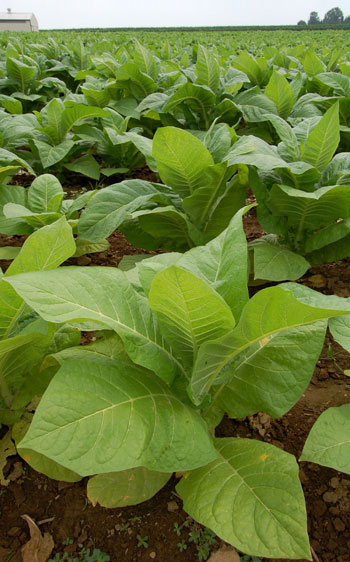 What many people don’t realize is that the Spanish and Portuguese were actually the original denizens of tobacco in ‘the Old World’. By the end of the 16th century, huge tracts of arable land on the Iberian peninsula had been dedicated to the cultivation of tobacco. In addition, it was the Spanish and Portuguese who cultivated the milder plant we so enjoy – Nicotina Tobaccum. In fact, it was only when John Rolfe "acquired" some Spanish seed that the product was introduced to North America (and even then a poor product). Prior to this, the Thirteen Colonies and portions of Upper and Lower Canada were planted with N. Rustica. Of course, the French influence on the plant – presented originally as a wonder-drug at the French court – is without redoubt; with Jean Nicot lending his name to the genus. The Dutch were also beginning their fabled history with the plant, cultivating tobacco throughout their Empire. Through the 17th century, tobacco cultivation reached the Near and Middle East, although it seems that the punishment for use of tobacco far outweighed the benefits in the Muslim nations.
What many people don’t realize is that the Spanish and Portuguese were actually the original denizens of tobacco in ‘the Old World’. By the end of the 16th century, huge tracts of arable land on the Iberian peninsula had been dedicated to the cultivation of tobacco. In addition, it was the Spanish and Portuguese who cultivated the milder plant we so enjoy – Nicotina Tobaccum. In fact, it was only when John Rolfe "acquired" some Spanish seed that the product was introduced to North America (and even then a poor product). Prior to this, the Thirteen Colonies and portions of Upper and Lower Canada were planted with N. Rustica. Of course, the French influence on the plant – presented originally as a wonder-drug at the French court – is without redoubt; with Jean Nicot lending his name to the genus. The Dutch were also beginning their fabled history with the plant, cultivating tobacco throughout their Empire. Through the 17th century, tobacco cultivation reached the Near and Middle East, although it seems that the punishment for use of tobacco far outweighed the benefits in the Muslim nations.
Despite its substandard origins, under the guidance and experimentation of farmers like John Rolfe in Virginia, the American tobaccos met and surpassed the quality offered by the Spanish varieties of the leaf. Naturally sweet, the crop produced by the Virginians was worth its weight in gold – in fact, it commanded such a high price that many land-owners had turned over all of their parcel to its production, ignoring the production of subsistence crop. It was due to this that the first British Laws governing the production of tobacco were passed, enforcing the percentage of land that one may devote to tobacco whilst at the same time standardizing cultivation methods across the North American colonies to ensure a high quality crop which would command the highest price at market (and the highest tariff for the government).
It should also be noted that this progression took place despite the best efforts of the British Government, led by the puritanical King James and Oliver Cromwell, to halt the use of tobacco in Britain and the Colonies. Indeed, as John Rolfe was forever changing the scale and method in which tobacco was cultivated in the Americas, the infamous ‘Counter Blaste to Tobacco’ was published. It is interesting to note that much like modern times, whilst the government appears to seek to stamp out the use of tobacco, the tax income earned is far too appealing to actually pay more than token lip-service. But I digress…
Now we must look at the early shipping of tobacco. In it’s raw state, tobacco is a rather large and bulky leaf, which doesn’t readily lend itself to the close confines of a ship. In addition, voyages were not counted in days, but rather months – and as any pipe- or cigar-smoker knows, dried tobacco simply doesn’t hold up for that long without some interference on our part. Enterprising sailors discovered that by soaking and spinning (rope) or pressing (plug) the raw leaf, they not only created a more stable and compact product for shipping, but imparted the flavour and aroma of what-ever liquid was used.
 But herein lies the problem. Sailors would use whatever liquid they had on hand at the time. Certainly, water mixed with sugars and honeys, liquors, molasses and the sort would have been common, but likely so too would be creosote, pitch, fruit-juices and the sort.
But herein lies the problem. Sailors would use whatever liquid they had on hand at the time. Certainly, water mixed with sugars and honeys, liquors, molasses and the sort would have been common, but likely so too would be creosote, pitch, fruit-juices and the sort.
Now, remember the controls put in place to ensure the cultivation of top quality product? Well, this document was simply refined, listing the additives which were allowed to be included for tobacco destined for the British markets – the British Commonwealth Tobacco Act.
Keeping the aforementioned in mind, most, if not all tobacco is flavoured to some degree. Anyone who has ever had the unfortunate experience of smoking ‘raw’ tobacco will tell you it is not pleasant. Sugars are added, processing methods impart characteristics, and of course casings and toppings are added. Amongst the additives allowed were sugars and molasses, honeys, the infamous ‘Lakelands’ floral essence, smoking (think Latakia) – and, the amber to dark liquid that kept the Royal Navy afloat for over three-hundred years, Rum (amongst other spirits). An English blend is not actually a blend of unadulterated tobaccos, as many seem to think, but rather a blend that adheres to the regulations outlined in the 16th and 17th centuries by the British Government; namely in the use of toppings and casings provided.
What follows is complete supposition on my part – I may be way off base, but it seems a rather convincing theory given the information at hand. That said, I expect the addition of Latakia, ‘Turkish’ and African varietals would come with sailors visiting ports of call in the Near and Middle East, while the addition of Perique, Kentucky, and other American varietals would be found in the creations of those in North America. Where Greg has strayed from the norm isn’t in the addition of rum to an English blend, but rather the addition of the atypical American tobaccos to a blend created in the Navy Style pertaining to the Near East; marrying the two concepts.
Note: Yes, I realize I am ignoring South American and European (ie: Spanish) tobacco varieties amongst others. The next time I am reviewing a ‘Escamas Marinas’ I’ll touch on those…
As to Sextant itself, as Greg notes, the presentation is a very loosely packed and rough-cut flake…and when he says loosely packed, he means it. Rubbing out the coppery brown, black, tan and gold mottled broken pieces requires very little effort, leaving one with an extremely rough-cut ribbon of varying dimensions. Fairly moist directly out of the tin, I find this blend actually behaves better if opened and allowed to breathe for a couple of days prior to smoking.
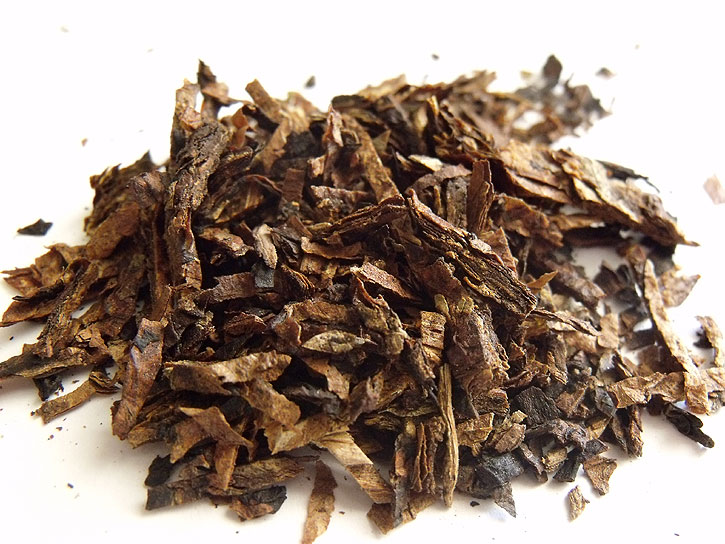
The tin-note brings strong notes of rum and Latakia, leaving little doubt in ones mind as to the make-up of this blend. That said, the rum notes are not cloying or overly sweet, nor do they hold the reek of alcohol that one gets from the heavily topped and cased aromatic style blends. The poignant peaty note of the Latakia is underpinned by a dank, almost damp odour, reminiscent of a wet-campfire. This translates into a pre-light draw, as does the sweet-spiciness of rum.
Charring light releases a plethora of flavours, however most prominent is a surprising sugary sweetness interlaced with a deep, spicy rum note akin to a hot-toddy. Underpinning this wonderfully is the mild, almost creosote-smoke note of Cyprian Latakia and a rich, deep earthiness that can only be the Kentucky coming through. Nuances of Star Anise weave in and out, while an almost piquant note and mouth-feel develop after a draw or two.
True-light presents more of the highly sweet brown-sugar and spiced rum notes at the forefront of the flavour profile, however brings the addition of a rich dark cocoa note. Earthy, dark and leathery undertones support the sweet creosote smokiness of the Cyprian Latakia, while the piquant note which was so fleeting on charring light grows slightly more prominent. The mildest of floral nuances can be detected – not a Lakelands essence by any stretch of the imagination, more likely provided by the Oriental leaf.
As the bowl progresses through the mid-point, I find that the sugary sweetness undergoes a change, taking on a nuttier flavour. As this happens, the rum notes begin to dissipate, leaving a molasses like flavour in their stead. The dark earthy notes continue, beginning to take on a slight mustiness which compliments the smoky Latakia wonderfully. The piquant notes develop a marked earthy and peppery flavour along the lines of green-peppercorn. Extremely mild nuances of salt and anise can be found, but disappear rather quickly.
Through the heel of the bowl, the sugary sweetness persists, however the rum flavour all but dissipates allowing the rich, earthy notes to grow more prevalent. The Latakia remains in the midst of the flavour profile, with the smoky sweetness neither overpowering nor diminishing. The peppery notes remain strong, taking on a more marked spiciness.
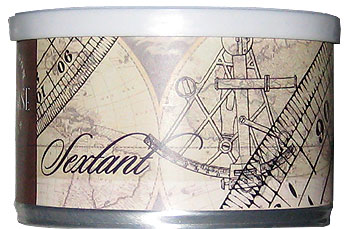 |
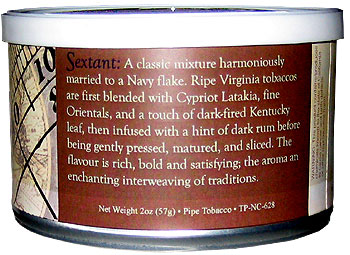 |
The room-note of this blend is not completely unpleasant with a wonderful sweet component, but it does feature the peaty, creosote note of Latakia fairly prominently. Both my wife and myself did note, however, that it seemed to dissipate very quickly, leaving my den with a neutral odour less than two hours after finishing a bowl (window open, fan on). This also seems to apply to the latent odour clinging to clothing and facial hair.
I found the nicotine level of this blend to be extremely satisfying. That said, I am a self-addicted nicotine fiend, and as such I would warn others to smoke slowly; dark-fired Kentucky has a way of making the world spin when you’re least expecting it. To quantify this statement, I would rate Sextant a solid 7/10 on the ‘Smith Scale of Nicotine’.
This blend burns wonderfully, leaving little dottle to contend with after few relights. I found the flavour profile was best highlighted when utilizing the ‘cannon-ball’ method of packing. The smoke remains fairly creamy throughout, and offers something of a dry mouth feel.
I don’t often disagree with others—but in reading the Sextant Teaser written by Kevin, he notes that he ‘wouldn`t have known <censored> was in there if you hadn’t told me’; then reveals in the comments that he was speaking of the Kentucky component. I have heard others say the same thing. I find this statement rather odd—Kentucky, while rather difficult to categorize, offers a very rich, deep earthy flavour and creamy, almost meaty mouth feel. With this in mind, I have to say that Sextant not only features the earthy rich notes prominently, but even goes so far as to highlight the dark leaf of the Americas.
 |
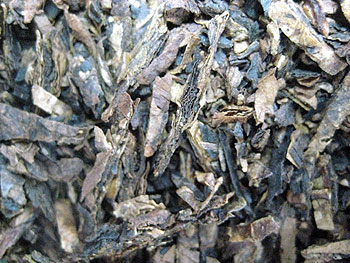 |
But this isn’t out of place by any stretch of the imagination. To anyone who has smoked the Samuel Gawith Navy Flake, you will recognize similarities in the flavour profiles. The depth of Kentucky is very reminiscent to the flavour of the African Burleys favoured by the English houses. But Greg has taken this traditional flavour a step further. Through blending mastery and outside the box thinking, he has added a layer of sweetness that seemingly bridges the gap between the traditional English and the so-called ‘Crossover Blend’.
With Sextant, Gregory Pease has created an excellent addition to the ‘Old London Series’, albeit a forward thinking and seemingly controversial one. As polarizing as this blend seems to be, one would be best served to grab a tin and try if for themselves, but for what it’s worth I highly recommend it.
A note from the author: In the writing of this article, I turned to many resources both online and off. I should note that much of the information I was able to access was rather scant; and certainly contains conjecture. In creating my simple history of tobacco above, I looked for commonalities in my research materials. That said; there are very likely errors – I am not ashamed to admit that I took this to Gregory Pease himself, and found that we exchanging new ideas and information. If you are interested in the history of tobacco, I would highly recommend seeking some of the exceptional books penned on the subject, many of which are public domain. Amongst the more invaluable are: ‘Tobacco; It’s History, Varieties, Culture, Manufacture and Commerce’ by E.R. Billings pub. 1875; ‘Tobacco in Colonial Virginia, The Sovereign Remedy’ by Melvin Herndon pub. 1957; ‘Counter-Blaste to Tobacco’ by King James and Oliver Cromwell pub 1604, edited 1884; and ‘The Social History of Smoking’ by G.L. Aperton pub 1914.
SPONSORED LINK: G.L. Pease Sextant – Click Here to Order Now!
SPONSORED LINK: G.L. Pease Sextant – Click Here to Order Now!










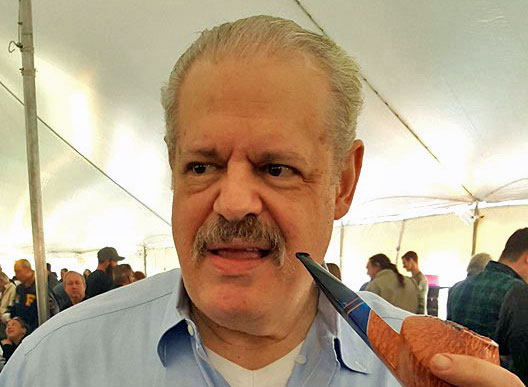

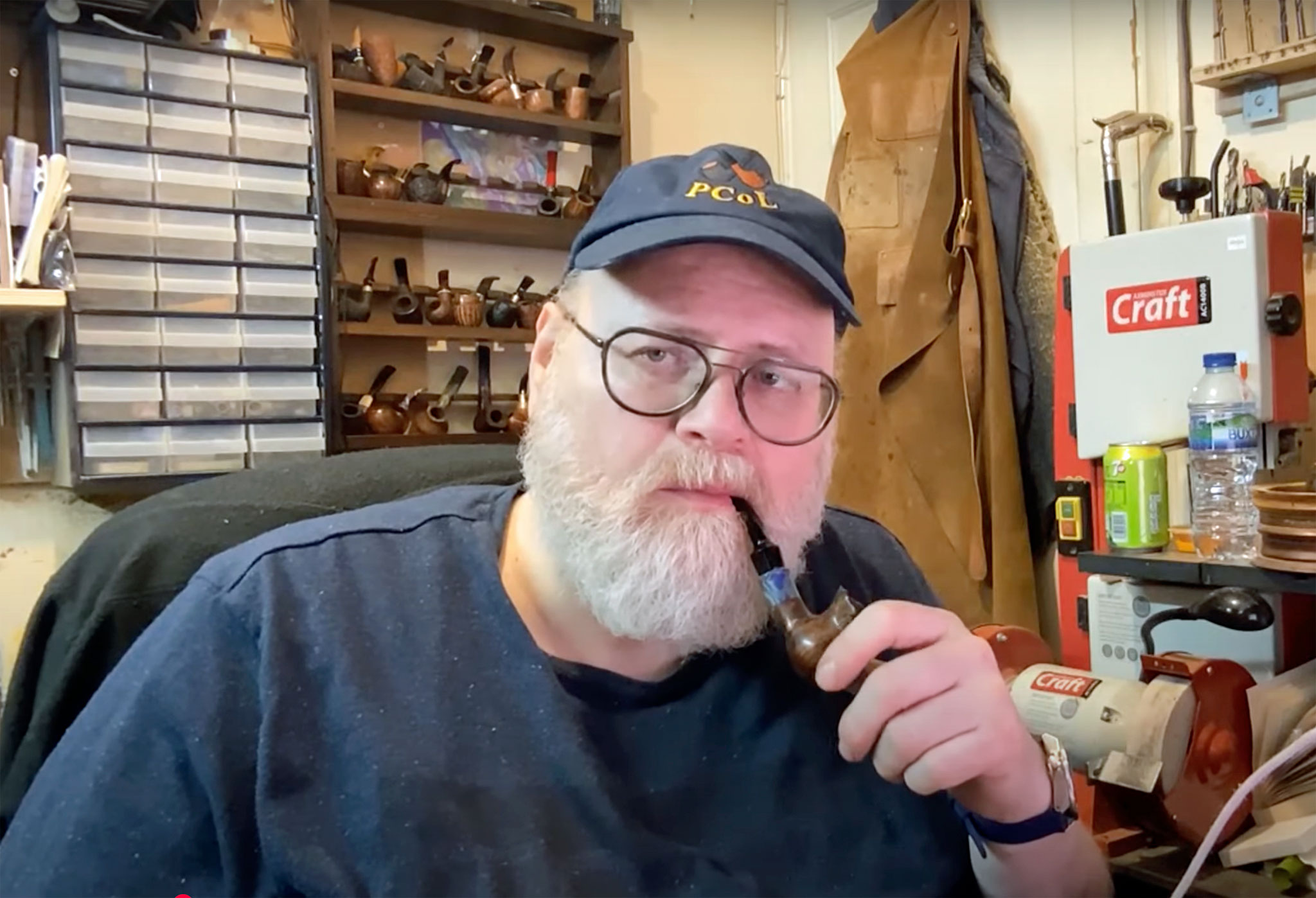




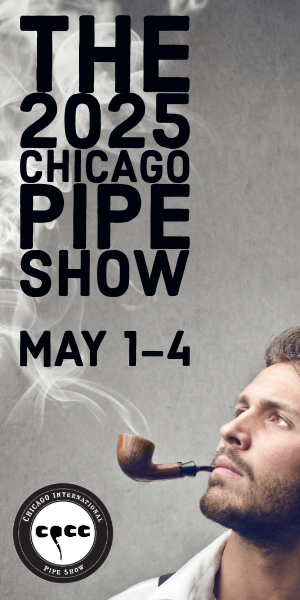

A great review with the added benefit of some wonderful historical background. “The room-note of this blend is not completely unpleasant…” I particularly liked that part. (Ah! The smell of campfires, of sun-warmed leather seats in a classic British roadster, of deeply peated malt whisky, of Lapsang Souchong tea – I love the smell of latakia in the morning!)
(Ah! The smell of campfires, of sun-warmed leather seats in a classic British roadster, of deeply peated malt whisky, of Lapsang Souchong tea – I love the smell of latakia in the morning!)
Nice review. I was not going to try this one but now I will have to.
I have a tin of this just begging to be opened. Sounds delicious!
Wonderful review!
I have flat-out fallen in love with this blend. I’ve long been a fan of Pease’s latakia mixtures as well as Filmore, with my favorites prior to Sextant being Odyssey and Maltese Falcon. But I’ve also always had a love of American-English mixtures — you know, burleys with latakia and maybe a pinch or two of other components, usually with a mild flavoring added. Sextant strikes me as being a top-shelf, “boutique” version of these blends. The flavor profile is not too different from blends like Countryside and Epiphany, only far more intense and smooth. Also, there is more complexity here than in those mixtures. In fact, I’m kind of surprised that more people haven’t commented upon this complexity. It’s no Renaissance or Charing Cross, of course, but there is a delightful metamorphosis of flavors as the bowl progresses.
Top-notch stuff!
This is a wonderful blend. This is one I can see going into the regular rotation.
Dear Mr. Smith, Thank You for the extraordinary review. This will be another blend that I will have to acquire.
Well, I took a link to a blend review and ended up getting a history lesson to boot! Thanks for the background research and excellent writing. It’s such a pleasure to read a piece when the author invests something of himself in the work. Nice of you to include the bibliography too! I also want to acknowledge the artwork that accompanies the article. I like pictures as much, or more, than the text.

.
That said, I think your review steered me clear of a $10 mistake. Well, that’s often more valuable than turning me on to something I would probably buy anyway. I guess I’ll continue to help Greg make his yacht payments, just with Haddo’s and Cairo instead.
Great review!
Outstanding review Adam and an OUTSTANDING tobacco Mr. Pease. This hits every one of my tobacco nails right on the head. Like smoking an old leather bound book full of earth and leather and peat and spice and a splash of rum to lightly sweeten the whole thing. You are a true tobacco sorcerer Greg. Both review and tobacco knocked it right out of the park fellas.
When I started doing this, I figured that one day, the newness would wear off, that I’d reach the point where the little tingle that runs down my spine when I read that people are enjoying my blends would fade. I knew I’d always appreciate the kind words, but they’d eventually stop making me a little giddy. A dozen years later, it hasn’t happened yet.
Thank you, gents, for the wonderful props. And, once again, to Adam for a wonderful and INTERESTING review!
You guys are the real stars. I’m just the Tobacco Sorcerer to the Stars. (With a tip-o-the-tam to ohin3! ;))
-glp
After reading this review, I bought a tin of this as a surprise for hubby. He absolutely loves this blend.
I just can’t contain myself any longer! First, THANK YOU Adam J. Smith for a magnificent, comprehensive, informative, entertaining, and delightful exposition, analysis, and review of a truly GREAT blend! And THANK YOU G.L. Pease for doing it again!! My entre into Pease-World was Lagonda, truly ecstatically brilliant in its own right. For one entire tin of that ambrosial mixture, EVERY TIME I light it up, I was blessed and baptized with first, byzantine liturgical incense(which aroma I love) and, almost simultaneously, dark expensive ultra-fine Belgian gourmet chocolate… No, no, no! Nothing icky and sweet but the very unsugared, undiluted essence of primeval wonderful chocolate. As my head would spin in delight of these these spirits, distinctly Greek pine resins would waft to and fro like the scent of beautiful Mediterranean women passing me on the narrow streets of Santorini. And then, the old leather of huge and throne-like Victorian men’s club smoking room chairs. Sigh. YES! And this is about Sextant! Sextant brought me all this, as if this were not happily enough, AND MORE! I can’t stop superlatives from spilling off my brain! I could tangibly experience the rum-annointed braided ropes and plugs below decks of a great sailing ship. Exotic woods and several different species of resinous incenses danced their own liturgies. And the light blessing of dark, mysterious, and rich rum, unsweetened pure cocoa, and my favorite cabernet sauvignon with a perfectly executed fillet would join the symphony! This is entirely too much for me! Time for another bowl immediately!! When may we get Sextant in 8 and 16 oz tins??? And thank you most sincerely again Mssrs Smith and Pease!
Excellent review, Adam! And an enjoyable history lesson. Greg Pease should thank you. You have convicted me to try it.